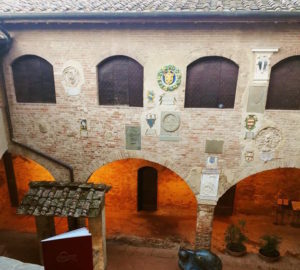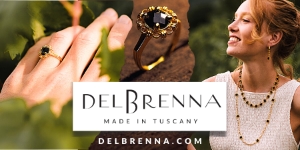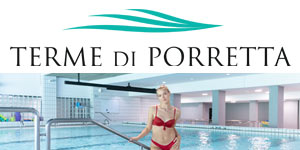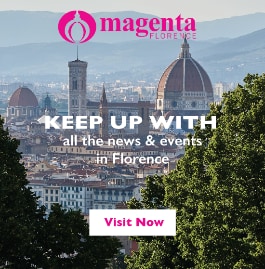
“L’Epifania tutte le feste le porta via” (Epiphany ends the Christmas festivities), is a well-known saying, but there is still plenty of time to take a leisurely holiday excursion in Tuscany until this Sunday, January 6.
Epiphany blends the Christian tradition of the Three Kings (Re Magi) arriving with gifts to join the Nativity scene and la Befana, an old, witch-like woman. Prior to Santa (Babbo Natale) arriving in Italy, la Befana was the main protagonist in delivering presents to children, which she still does on the night of January 5. Tradition holds that the old lady tried her best to follow the Magi to Jesus but got lost along the way; Befana and the Three Kings can be a seasonal starting point in planning a day trip within Tuscany this week.
Benozzo Gozzoli, who painted the famous ‘Journey of the Magi’ frescoes in Florence’s Palazzo Medici Riccardi, has a museum dedicated to several of his pieces in Castelfiorentino as well as works publicly displayed in Certaldo, part of a special, and specially-priced countryside museum itinerary called “The Art Pilgrim Passport,” Credenziale del pellegrino dell’arte. As for the Befana, she is a main protagonist in several regional Christmas villages open through January 6. (rosanna cirigliano)
FOR FAMILIES
Elves have more to do in Cortona than any other Christmas village in Tuscany. They have organized free archeological tours for kids at MAEC Park at Il Sodo (8:30 am – 1 pm) and engage children in activities at MAEC (11 am – 1 pm, 2 – 5 pm, free of charge) while parents are viewing the Etruscan and Roman artifacts at the MAEC museum in Piazza Signorelli (half-price admission for families), and help out at the Babbo Natale house at Santa Margherita, where Santa greets kids.
In the historic center, a holiday market showcasing local gastronomic specialties and crafts, clothing and accessories is found in Piazza Signorelli (January 1, 2, 5 & 6 from 10 am to 7:30 pm). A nearby winter park features an ice rink (open through January 13, weekdays from 3 pm to 10 pm; open weekends from 10 am to midnight). Street concerts take place daily.
Befana arrives to close the Cortona Christmas village on January 6 but from January 10 to 13 the winter park remains open with its usual hours.
The main draw at Abetone-Cutigliano are the ski areas just atop and around the towering mountain range. Open all winter with snow the whole time, there are runs for all levels. Hitch a gondola to the summit and come back down for the holiday festivities.
Abetone has just inaugurated its first-ever Christmas market in a village square surrounded by hand-cut wooden fences where families have the option here to visit the House of Babbo Natale and Befana (open 10 am to 8 pm; free entrance). Cutigliano has its own “Casa della Befana,” where the lady herself will hand out gifts and sweets to children on January 5 starting at 5 pm; a market (also open on Jan. 6) with local culinary dishes (such as necci) and crafts is set up nearby the same day.
Abetone is also hosting its traditional Nativity scene (presepio) in the main square, while an exhibition of 16 hand-crafted scenes hand-crafted by artisans in wood, terra-cotta and ceramics as well as on canvas are displayed in Cutigliano’s Palazzo dei Capitani. (katy sparks)
FOR ART LOVERS OF ALL AGES
Museums around Tuscany have banded together to create a unified system called “The Heart of Tuscany,” providing a new, affordable ticket that allows access to 20 galleries off the beaten path. Valid for up to one year after the first entry, it benefits both locals and tourists who want to get a full sense of the rich culture of this area. For €15, visitors can purchase the Credenziale del pellegrino dell’arte, or The Art Pilgrim Passport, that gives access to over 300,000 artworks by such names as Leonardo da Vinci.
The ticket includes access to fine art exhibits including glass, ceramics, and traditional crafts, but is not valid for temporary exhibitions or special events. The initiative comprises 20 museums located in 11 different towns. This single ticket can be purchased in nearly all the museums, and is a bargain because the total entrance to all these places is more expensive.
Also available for €35 (for a family up to two adults, three children), it is a great way for visitors and locals to gain a deeper sense of how these artworks define the cultural identity of Tuscany. This “passport” lays the foundation for an immersive experience, with the help of an audio guide app that explains and discusses selected pieces.
The wide variety of museums have artifacts that satisfy most interests include Museo della Collegiata, Empoli; the San Verdiana and Benozzo Gozzoli museums in Castelfiorentino; the Archeology Museum of Montelupo; and the Leonardo Museum in Vinci.
The Museo della Collegiata is popular because of its wide-ranging collection of Renaissance and Gothic religious depictions. The art was rescued from deconsecrated churches and is now open for all people to appreciate. Some famous pieces, such as Masolino’s Gothic-style Pietà and Filippo Lippi’s masterpiece Maestà are just a few of the meaningful works present in this museum.
The Castelfiorentino galleries are hidden gems. San Verdiana contains a lovely Madonna and Child (1284) by Cimabue, a fondo oro painted on a gold background where the child is gently touching his mother’s face, in addition to panels by Taddeo Gaddi and Jacopo da Casentino. The Benozzo Gozzoli, or BeGo museum features several colorful, peopled frescoes of the early Renaissance artist who portrayed the Medici family in his Florence ‘Journey of the Magi’ artwork.
For people interested in history, Montelupo’s Archaeology Museum houses many works found from the prehistoric times, but also historic ceramics. This museum has one of the largest collections of majolica, and the painted vases, plates, and other objects to represent some of the most detailed work from the Middle Ages and Renaissance.
In the Leonardo Museum, enthusiasts can appreciate the genius of Leonardo da Vinci with modern models that demonstrate da Vinci’s vast knowledge of science and the natural world. On display are many devices created by da Vinci to help humanity better learn how to harness the energy of the elements. For book-lovers, people are able to visit the Leonardo Library and examine his studies.
These are but a few of the itineraries one can enjoy with the Credenziale del pellegrino dell’arte in the “Museo Diffuso” of Empoli and the Val d’Elsa.








